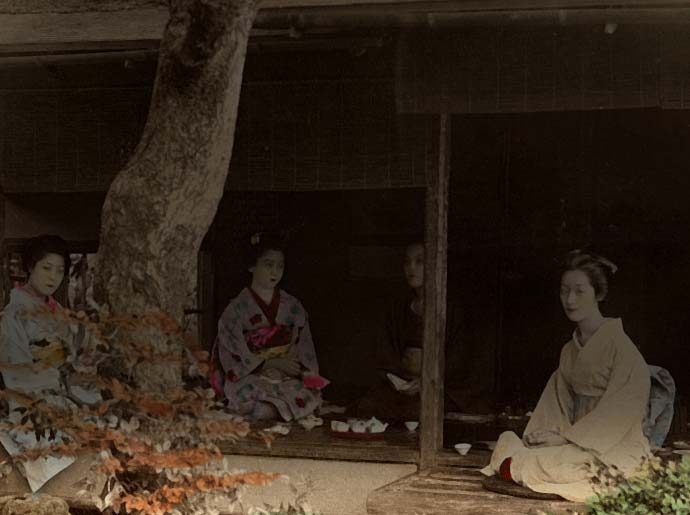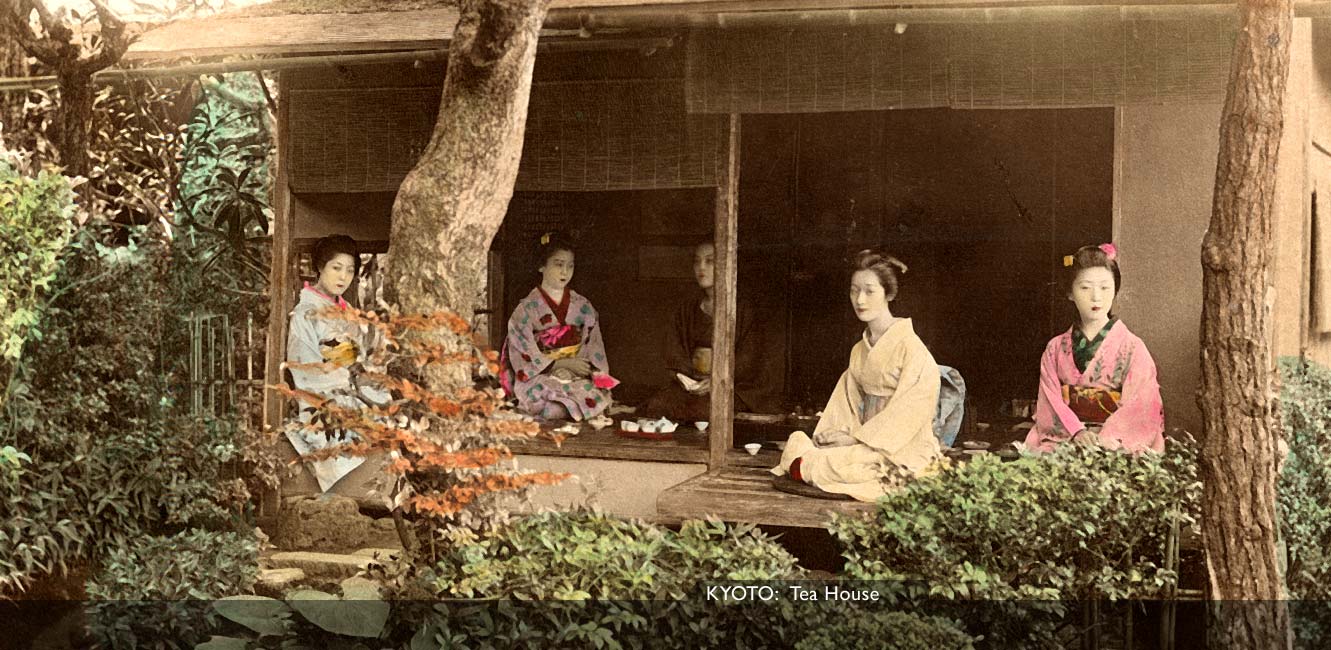Kyoto—Teahouse
“For tiffin we entered a Japanese tea-house, and were shown into an upstairs room as guests of honour, where we squatted on our heels on the mats, and awaited further developments. A pretty, but highly rouged and powdered damsel with blackened teeth, and lips painted a cherry red, brought in, on a lacquer tray, little bowls of fish, rice, and cakes with tea and sake.”

Miscellaneous views —Teahouses
“To the traveler the tea-house presents many phases of comfort, interest, and amusement altogether wanting in the conventional hotel, which is, unfortunately, becoming common on the great routes of travel.”

“At ordinary Japanese inns the charge for a day’s accommodation ranges from forty cents to one dollar. A Japanese can get his lodgings and all his meals for about thirty cents, but foreigners are so clumsy, untidy, and destructive, and they demand so many unusual things, that they are charged the highest price, which included lodging, bedding, and all the tea, rice, and hot water they may wish.”
Arthur H. Crow, Highways and Byeways in Japan, (London, 1883) p. 55
Eliza Ruhamah Scidmore, Jinrikisha Days in Japan, (New York, 1891) pp. 143, 145



